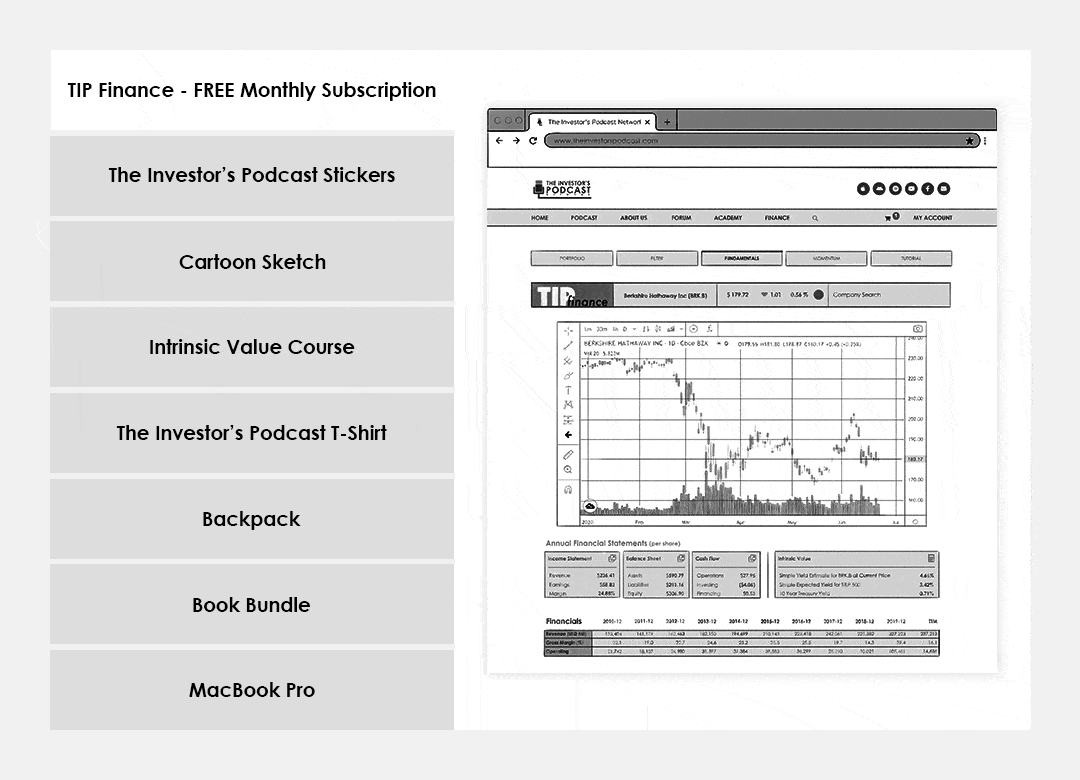Blitzkrieg Attack
19 September 2022

Hi, The Investor’s Podcast Network Community!
Welcome back to We Study Markets!
As much of the world watched the funeral of Queen Elizabeth today, the investment community will be eagerly awaiting the Federal Reserve’s interest-rate decision this week.
Jerome Powell and crew will be concluding a two-day meeting on Wednesday in which most investors are expecting the central bank to announce a supersized interest rate increase of at least 75 basis points (0.75%).
Even in the face of historically high inflation rates, corporate earnings have proven to be resilient for much of the year. Sliding earnings estimates recently have raised concerns about the state of the U.S. economy, though, and have forced some investors to reconsider how much equity exposure they want to have.
Stocks in vaccine makers tumbled Monday after President Biden said in a televised interview that the Covid-19 pandemic was over. Moderna (MRNA) dropped 8.7% and Novavax (NVAX) fell 8.2% on the news.
Here’s the market rundown:

*All prices as of market close at 4pm EST
Today, we’ll discuss central bank’s blitzkrieg attack on inflation, an exodus from Chinese hedge funds, a BlackRock “Reconstruction Fund” for Ukraine, and how to build a second brain (for productivity).
All this, and more, in just 5 minutes to read.
Let’s go!⬇️
IN THE NEWS
🌎 Fed Leads 500-Basis Point Global Assault On Inflation (Bloomberg)
Explained:
- Central banks globally are preparing to launch a blitzkrieg attack on inflation this week. In total, interest rates over three days and several countries will rise by 500 basis points (5%).
- Sweden will move first tomorrow with an expected 75-point hike, followed by the U.S. Federal Reserve with a move of the same anticipated magnitude.
- On Thursday, though, we’ll see the most widespread action. From the Philippines to Indonesia and Taiwan, to Switzerland, England, South Africa, and possibly Egypt, these diverse countries all share one thing in common: A desperate desire to slow the pace of price increases through higher rates.
What to know:
- While the rest of the world plays catch-up to inflation, Brazil stands out as being particularly proactive in its fight against it. The country has been raising rates in an unprecedented series of increases over the past year and a half reaching 13.75%.
- On the flip side, Turkey and Japan stand out for their unwillingness to raise interest rates (for different reasons).
🇨🇳 China Hedge Funds Show Biggest Net Outflows In 15 Years (Reuters)
Explained:
- Hedge funds investing in Greater China are experiencing a huge investor exodus, as many cut exposure amidst rising geopolitical tensions and government policy uncertainties.
- Year-to-date, these funds have seen a $3.6 billion net outflow after benefiting from hefty positive capital flows in 2020 and 2021.
- As the Chinese Communist Party congress is set for mid-October, this symbolic once-in-five-year gathering has rendered many investors cautious, as they wait to see what new initiatives and policies are announced.
What to know:
- For example, one survey of Hong Kong-based investors showed that 53% expect to “do nothing” until the congress in October has passed.
- Of course, not everyone is on the sidelines. The sizable California State Teachers’ Retirement System recently posted a request for proposal indicating that they’re looking for China-focused equity managers to help increase their exposure to the region.
🇺🇦 Zelensky Meets With BlackRock Chief To Discuss Reconstruction Fund (NY Times)
Explained:
- President Volodymyr Zelensky of Ukraine met with BlackRock’s head Larry Fink to attract investment into the country with help from the world’s largest asset manager.
- BlackRock oversees over $8.5 trillion globally, and it’s aiming to provide advice for Ukraine in configuring a reconstruction fund that’ll attract investor interest. The hope is that both private investors and governments will participate in “rejuvenating the market economy in Ukraine.”
What to know:
- BlackRock’s Financial Market Advisory team works with financial institutions, regulators, and governments to provide advice, and this is done separately from the company’s money management business.
- The Ukrainian government estimates that its economy will need at least $750 billion to recover from Russia’s invasion, while economists elsewhere tally the number at closer to $100 billion.
- To attract investors in meaningful size, an end to the fighting must come that coincides with national and corporate debt restructurings and extensive insurance arrangements.
DIVE DEEPER: BUILDING A SECOND BRAIN
Patrick — I’m a productivity tools nerd and have been ever since taking my first course using the Franklin Planner, followed by reading David Allen’s Getting Things Done several years after that.
I recently heard legendary investor Guy Spier mention using Tiago Forte’s productivity system with a simple moleskin notebook and Evernote to organize his informational life. Forte’s book on the system is called Building a Second Brain.
I decided to go further down the “Second Brain” rabbit hole and recently listened to Tiago’s interview with Robert Breedlove on his What is Money? podcast.
Like many of us, I struggle with information overload. There’s a massive amount of books, articles, videos, Twitter threads, and podcasts I consume for my role as a newsletter writer for We Study Markets. I love it, but sometimes my mind can feel like a jumbled mess from consuming all sorts of content.
The challenge with information overload is how to systematically organize that content into a cohesive system that works to easily retrieve what you need. To date, relying on my own memory to recall content I want to return to has had diminishing marginal returns as I age.
Quick fact: The average knowledge worker consumes 34 gigabytes of information per day, according to a study by the University of California, San Diego 🤯
What is a second brain?
A second brain is simply the name for a trusted place outside your head where you can collect and organize your most important ideas and insights.
In the old days, this would have been called a commonplace book. Ben Franklin had one. Leonardo da Vinci used one as well. Jerry Seinfeld jots everything down. Any creative person likely uses one, and so should we — just updated for the digital age in which we live.
Doing it in an analog fashion is often inefficient. But, thanks to our tech-enabled world, we can create a digital commonplace book.
Anytime you come across inspiration, you have a single source to write these ideas down. This digital commonplace book is what Forte calls a “second brain.”
A second brain is also a system you follow. You can think of it like Windows or iOS, except for your life and work. It’s a system to be used daily anytime you come across ideas or information you want to recall.
The first solution to the information overload problem is to write things down. Anything you find interesting or useful goes into the second brain system. Like me, we often think we will just remember all of this, but writing it down is key to creating a second brain.
Why you should build a second brain
What’s the point of writing all this stuff down?
Well, if you’re a creative person or knowledge worker, you need a place to capture ideas from the world around you. You don’t want to have to rely on inspiration from your own brain when it comes time for creative work. Instead, you can open up your second brain and review all your creative ideas. Doing so makes creative output simpler and less stressful.
You don’t have to be a “content creator” either to use this system. Tiago says that virtually every job involves knowledge work of some kind in today’s marketplace.
The job of a “second brain” is to be an external, integrated digital repository for the things you learn and the resources from which they come. It is a storage and retrieval system, packaging bits of knowledge into discrete packets that can be forwarded to various points in time to be reviewed, utilized, or deleted.

How you should build a second brain
There are four components to building a second brain. Tiago calls it the C.O.D.E. system:
• Capture — Productivity guru David Allen said, “Your brain is for having ideas. Not for holding them.” Capturing information and ideas in a note-taking app or even in a journal frees up our brains to do more important, creative things.
The standard part of any productivity system is to have a calendar and a to-do list. One step beyond that is capturing any ideas that resonate with us in our second brain. Apple Notes or Evernote is great for this, but any note-taking app will suffice.
You can capture anything that resonates with you into your second brain, but some ideas include inspiring quotes, highlights from a book, ideas from a podcast, an interesting website and blog post, notes from a meeting, or even journal entries.
• Organize — Now that we’ve captured all kinds of information into our second brain, the next step is to organize it in a way that makes sense.
Tiago says the wrong way to organize them is based on where you found the information — For example, having a podcast notes folder, a book notes folder, a Twitter notes folder, or a website notes folder.
Instead, he recommends that we organize things based on actionability and ask, “Where will I potentially use this information?” In this way, you organize based on projects rather than by topic, allowing for a more targeted, systematic approach.
• Distill — Now that we have all this information captured, what do we do with it?
Tiago discusses an idea called Progressive Summarization which is highlighting on steroids. The point of progressive summarization is to find the information you need that matters at a glance.
He recommends organizing the information based on the acronym P.A.R.A. which stands for Projects, Areas of Responsibility, Resource, and Archive.
A project is a series of tasks linked to a goal with a deadline. Areas of responsibility is a sphere of activity with a standard to be maintained over time. Resource is a topic or theme of ongoing interest. Archives are inactive items from the other three categories.
• Express — This is where you show and express your work by converting the information and ideas you’ve captured into a form beneficial to others. Nothing forces you to learn content better than by teaching it to others. Hoarding the information is somewhat useless, unless you’re sharing your ideas. The whole idea is to show our work and express our creativity to the world.

Wrapping it up
Building a Second Brain is something I’m committed to learning more about. I’ve ordered Tiago’s book and plan on implementing his ideas for more efficiently gathering and retrieving information while upgrading from my simple calendar and to-do list.
Let us know if you’ve experimented with or regularly use a productivity system like Tiago Forte’s.
How has it impacted or improved your life?
Readers, are there any other systems you’d recommend for organizing and synthesizing the information you consume each day?
SEE YOU NEXT TIME!

That’s it for today on We Study Markets!
See you later!
If you enjoyed the newsletter, keep an eye on your inbox for them on weekdays around 6pm EST, and if you have any feedback or topics you’d like us to discuss, simply respond to this email.









